Inbox and Environment News: Issue 372
August 19 - 25, 2018: Issue 372
Discovery Casts Dark Shadow On Computer Security
August 15th, 218: CSIRO
Two international teams of security researchers have uncovered Foreshadow, a new variant of the hardware vulnerability Meltdown announced earlier in the year, that can be exploited to bypass Intel Processors' secure regions to access memory and data.
The vulnerability affects Intel's Software Guard Extension (SGX) technology, a new feature in modern Intel CPUs which allows computers to protect users' data in a secure 'fortress' even if the entire system falls under an attacker's control.
The two teams that independently and concurrently discovered Foreshadow have published a report on the vulnerability, which causes the complete collapse of the SGX ecosystem and compromises users' data.
"SGX can be used by developers to enable secure browsing to protect fingerprints used in biometric authentication, or to prevent content being downloaded from video streaming services," Dr Yuval Yarom from CSIRO's Data61 and the University of Adelaide's School of Computer Science said.
"Foreshadow compromises the confidentiality of the 'fortresses', where this sensitive information is stored and once a single fortress is breached, the whole system becomes vulnerable."
The researchers reported these findings to Intel earlier this year, and the company's own analysis into the causes of the vulnerability led to the discovery of a new variant of Foreshadow, called Foreshadow-NG which affects nearly all Intel servers used in cloud computing.
Foreshadow-NG is theoretically capable of bypassing the earlier fixes introduced to mitigate against Meltdown and Spectre, potentially re-exposing millions of computers globally to attacks.
"The SGX feature is widely used by developers and businesses globally, and this opens them up to a data breach that can potentially affect their customers as well," Dr Yarom said.
"Intel will need to revoke the encryption keys used for authentication in millions of computers worldwide to mitigate the impact of Foreshadow.
"Intel's discovery of the Foreshadow-NG variant is even more severe but will require further research to gauge the full impact of the vulnerability."
Intel has since released patches, updates and guidelines to resolve both Foreshadow and Foreshadow-NG.
Researchers have not yet tested if similar flaws exist in processors of other manufacturers.
Adrian Turner, CEO of CSIRO's Data61, said this is a significant discovery that shows the far-reaching impact of Meltdown and Spectre and reinforces the role of research for discovering and preventing flaws.
"Experts like Dr Yarom play a vital role in finding vulnerabilities, responsibly disclosing them and developing trustworthy systems to keep critical infrastructure secure," Mr Turner said.
"Data61 has also joined the RISC-V Foundation's security task group which aims to prevent the likes of Meltdown and Spectre from occurring again."
The two teams that discovered Foreshadow include:
Jo Van Bulck, Frank Piessens, Raoul Strackx (imec-DistriNet, KU Leuven) Marina Minkin, Mark Silberstein (Technion), Ofir Weisse, Daniel Genkin, Baris Kasikci, Thomas F. Wenisch (University of Michigan), Yuval Yarom (CSIRO's Data61 and University of Adelaide)
For Australians concerned about security, more information on how to be protected can be found at: Foreshadow
August 15th, 218: CSIRO
Two international teams of security researchers have uncovered Foreshadow, a new variant of the hardware vulnerability Meltdown announced earlier in the year, that can be exploited to bypass Intel Processors' secure regions to access memory and data.
The vulnerability affects Intel's Software Guard Extension (SGX) technology, a new feature in modern Intel CPUs which allows computers to protect users' data in a secure 'fortress' even if the entire system falls under an attacker's control.
The two teams that independently and concurrently discovered Foreshadow have published a report on the vulnerability, which causes the complete collapse of the SGX ecosystem and compromises users' data.
"SGX can be used by developers to enable secure browsing to protect fingerprints used in biometric authentication, or to prevent content being downloaded from video streaming services," Dr Yuval Yarom from CSIRO's Data61 and the University of Adelaide's School of Computer Science said.
"Foreshadow compromises the confidentiality of the 'fortresses', where this sensitive information is stored and once a single fortress is breached, the whole system becomes vulnerable."
The researchers reported these findings to Intel earlier this year, and the company's own analysis into the causes of the vulnerability led to the discovery of a new variant of Foreshadow, called Foreshadow-NG which affects nearly all Intel servers used in cloud computing.
Foreshadow-NG is theoretically capable of bypassing the earlier fixes introduced to mitigate against Meltdown and Spectre, potentially re-exposing millions of computers globally to attacks.
"The SGX feature is widely used by developers and businesses globally, and this opens them up to a data breach that can potentially affect their customers as well," Dr Yarom said.
"Intel will need to revoke the encryption keys used for authentication in millions of computers worldwide to mitigate the impact of Foreshadow.
"Intel's discovery of the Foreshadow-NG variant is even more severe but will require further research to gauge the full impact of the vulnerability."
Intel has since released patches, updates and guidelines to resolve both Foreshadow and Foreshadow-NG.
Researchers have not yet tested if similar flaws exist in processors of other manufacturers.
Adrian Turner, CEO of CSIRO's Data61, said this is a significant discovery that shows the far-reaching impact of Meltdown and Spectre and reinforces the role of research for discovering and preventing flaws.
"Experts like Dr Yarom play a vital role in finding vulnerabilities, responsibly disclosing them and developing trustworthy systems to keep critical infrastructure secure," Mr Turner said.
"Data61 has also joined the RISC-V Foundation's security task group which aims to prevent the likes of Meltdown and Spectre from occurring again."
The two teams that discovered Foreshadow include:
Jo Van Bulck, Frank Piessens, Raoul Strackx (imec-DistriNet, KU Leuven) Marina Minkin, Mark Silberstein (Technion), Ofir Weisse, Daniel Genkin, Baris Kasikci, Thomas F. Wenisch (University of Michigan), Yuval Yarom (CSIRO's Data61 and University of Adelaide)
For Australians concerned about security, more information on how to be protected can be found at: Foreshadow
PHYSICIST APPOINTED AS CSIRO CHIEF SCIENTIST
August 14, 2018: CSIRO
Australia's national science agency has appointed Dr Cathy Foley to the position of CSIRO Chief Scientist - a unique role which will help champion science, its impact and contribution to the world.
Dr Foley is a world-renowned physicist and science leader most noted for her work developing superconducting devices and systems which have assisted in unearthing over $6 billion in minerals worldwide.
Dr Foley will start in the role at the end of September. She said her priority will be promoting science, STEM and women in science.
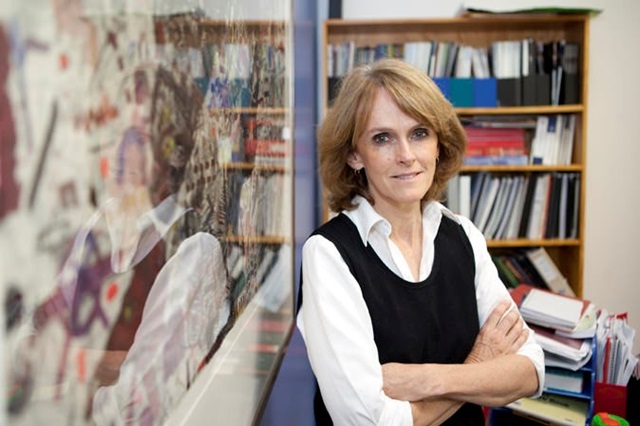
Dr Cathy Foley.
"Australia's future prosperity will be fuelled by science," Dr Foley said.
"Science which creates new industries, new jobs and shapes the minds and aspirations of our future leaders.
"We can't keep thinking about science as something which is locked away in a lab. It connects and drives everything we touch and do.
"I'm looking forward to not just spreading the word, but helping shape the science agenda and raising the profile of the role of women in STEM."
Dr Foley is currently the Deputy Director and Science Director of CSIRO's manufacturing business unit. She has been an advocate for women in science, for the communication of science and science education over the past 30 years.
She is credited with helping to create LANDTEM, a technology which uses superconductors to detect minerals deep underground. In 2015, Cathy and her team were awarded the prestigious Clunies Ross award for the innovation.
CSIRO Chief Executive Dr Larry Marshall said Dr Foley was an incredible leader and scientist.
"Cathy is a great contributor, with a passion for turning excellent science into powerful solutions for Australia," he said.
"I am looking forward to seeing her make this role her own, and bringing the voice of CSIRO science to help Australia navigate a path to prosperity through global disruption."
Dr Foley was awarded a Public Service Medal on Australia Day in 2003. In the same year, she won the Eureka Prize for the promotion of science.
In 2013 she was awarded the NSW Premier's Award for Woman of the Year. She is a Fellow of the Institute of Physics in the UK, Past-President of both the Australian Institute of Physics and Science and Technology Australia that represents 65000 Australian scientists and a Fellow of the Academy of Technological Sciences and Engineering (ATSE) and past national winner of the Telstra Business Women's Award for Innovation in 2009.
She joined the CSIRO Division of Applied Physics in 1985 as a National Research Fellow, being promoted to Senior Research Scientist in 1991, Principal Research Scientist in 1996, Senior Principal Research Scientist in 2000 and Chief Research Scientist in 2008.
August 14, 2018: CSIRO
Australia's national science agency has appointed Dr Cathy Foley to the position of CSIRO Chief Scientist - a unique role which will help champion science, its impact and contribution to the world.
Dr Foley is a world-renowned physicist and science leader most noted for her work developing superconducting devices and systems which have assisted in unearthing over $6 billion in minerals worldwide.
Dr Foley will start in the role at the end of September. She said her priority will be promoting science, STEM and women in science.

Dr Cathy Foley.
"Australia's future prosperity will be fuelled by science," Dr Foley said.
"Science which creates new industries, new jobs and shapes the minds and aspirations of our future leaders.
"We can't keep thinking about science as something which is locked away in a lab. It connects and drives everything we touch and do.
"I'm looking forward to not just spreading the word, but helping shape the science agenda and raising the profile of the role of women in STEM."
Dr Foley is currently the Deputy Director and Science Director of CSIRO's manufacturing business unit. She has been an advocate for women in science, for the communication of science and science education over the past 30 years.
She is credited with helping to create LANDTEM, a technology which uses superconductors to detect minerals deep underground. In 2015, Cathy and her team were awarded the prestigious Clunies Ross award for the innovation.
CSIRO Chief Executive Dr Larry Marshall said Dr Foley was an incredible leader and scientist.
"Cathy is a great contributor, with a passion for turning excellent science into powerful solutions for Australia," he said.
"I am looking forward to seeing her make this role her own, and bringing the voice of CSIRO science to help Australia navigate a path to prosperity through global disruption."
Dr Foley was awarded a Public Service Medal on Australia Day in 2003. In the same year, she won the Eureka Prize for the promotion of science.
In 2013 she was awarded the NSW Premier's Award for Woman of the Year. She is a Fellow of the Institute of Physics in the UK, Past-President of both the Australian Institute of Physics and Science and Technology Australia that represents 65000 Australian scientists and a Fellow of the Academy of Technological Sciences and Engineering (ATSE) and past national winner of the Telstra Business Women's Award for Innovation in 2009.
She joined the CSIRO Division of Applied Physics in 1985 as a National Research Fellow, being promoted to Senior Research Scientist in 1991, Principal Research Scientist in 1996, Senior Principal Research Scientist in 2000 and Chief Research Scientist in 2008.
Microfossils, Possibly World's Oldest, Had Biological Characteristics
August 16, 2018
Scientists have confirmed that the 3.4-billion-year-old Strelley Pool microfossils had chemical characteristics similar to modern bacteria. This all but confirms their biological origin and ranks them amongst the world's oldest microfossils. The work is presented at the Goldschmidt geochemistry conference in Boston, with simultaneous publication in the peer-reviewed journal Geochemical Perspectives Letters.
A team of scientists, led by Dr Julien Alleon (IMPMC, Paris, France; and MIT, Cambridge, MA, USA) have been able to show that the chemical residuals from ancient microfossils match those of younger bacterial fossils, and so are likely to have been laid down by early life forms.
They compared the results of synchrotron-based X-ray absorption spectroscopy analysis of the Strelley Pool microfossils with more recent ones from the Gunflint Formation (1.9 billion years old, found on the shores of Lake Superior, Ontario, Canada) and with modern bacteria. All showed similar absorption features, indicating that the residual chemicals were made from the same building blocks, thereby supporting a biological origin (see illustration below).
Dr Jullien Alleon said:
"There are a couple of important points which come out of this work. Firstly, we demonstrate that the elemental and molecular characteristics of these 3.4 Ga microfossils are consistent with biological remains, slightly degraded by fossilization processes. This effectively supports the biological origin of the Strelley Pool microfossils. There are competing claims over which microfossils are actually the world's oldest, this analytical strategy needs to be applied to other ancient samples to help settle the controversy.
Secondly, it is remarkable that these echoes of past life have survived the extreme conditions they have experienced over the last 3.4 billion years: we know from the molecular structure of the microfossils that they have been exposed to temperatures of up to 300 °C for long periods. And yet we are still able to see signs of their original chemistry.
This is a step forward to confirming that these are indeed the oldest fossils yet discovered."
Commenting, Professor Vickie Bennett (Australian National University) said:
"This is exciting work with the new types of analyses providing compelling evidence that the cherts contain biogenic microfossils. This is in line with other observations for early life from the Strelley Pool rocks, including stromatolites interpreted as microbial mats, and further confirming that the minimum age for life on Earth is 3.4 billion years.
The techniques used here are not applicable to the older rocks that host the claims for the oldest terrestrial life, as these rocks were exposed to much higher temperatures. These samples include the 3.7 billion year old stromatolites from Isua, Greenland and the 4.1 billion year old Canadian microfossils. However, this work shows how quickly the field is developing and that new capabilities for testing and confirming earlier evidence of life are in reach."
Journal References:
J. Alleon, S. Bernard, C. Le Guillou, O. Beyssac, K. Sugitani, F. Robert. Chemical nature of the 3.4 Ga Strelley Pool microfossils. Geochemical Perspectives Letters, 2018; 37 DOI: 10.7185/geochemlet.1817
Kenichiro Sugitani, Koichi Mimura, Tsutomu Nagaoka, Kevin Lepot, Makoto Takeuchi. Microfossil assemblage from the 3400Ma Strelley Pool Formation in the Pilbara Craton, Western Australia: Results form a new locality. Precambrian Research, 2013; 226: 59 DOI: 10.1016/j.precamres.2012.11.005
August 16, 2018
Scientists have confirmed that the 3.4-billion-year-old Strelley Pool microfossils had chemical characteristics similar to modern bacteria. This all but confirms their biological origin and ranks them amongst the world's oldest microfossils. The work is presented at the Goldschmidt geochemistry conference in Boston, with simultaneous publication in the peer-reviewed journal Geochemical Perspectives Letters.
A team of scientists, led by Dr Julien Alleon (IMPMC, Paris, France; and MIT, Cambridge, MA, USA) have been able to show that the chemical residuals from ancient microfossils match those of younger bacterial fossils, and so are likely to have been laid down by early life forms.
They compared the results of synchrotron-based X-ray absorption spectroscopy analysis of the Strelley Pool microfossils with more recent ones from the Gunflint Formation (1.9 billion years old, found on the shores of Lake Superior, Ontario, Canada) and with modern bacteria. All showed similar absorption features, indicating that the residual chemicals were made from the same building blocks, thereby supporting a biological origin (see illustration below).
Dr Jullien Alleon said:
"There are a couple of important points which come out of this work. Firstly, we demonstrate that the elemental and molecular characteristics of these 3.4 Ga microfossils are consistent with biological remains, slightly degraded by fossilization processes. This effectively supports the biological origin of the Strelley Pool microfossils. There are competing claims over which microfossils are actually the world's oldest, this analytical strategy needs to be applied to other ancient samples to help settle the controversy.
Secondly, it is remarkable that these echoes of past life have survived the extreme conditions they have experienced over the last 3.4 billion years: we know from the molecular structure of the microfossils that they have been exposed to temperatures of up to 300 °C for long periods. And yet we are still able to see signs of their original chemistry.
This is a step forward to confirming that these are indeed the oldest fossils yet discovered."
Commenting, Professor Vickie Bennett (Australian National University) said:
"This is exciting work with the new types of analyses providing compelling evidence that the cherts contain biogenic microfossils. This is in line with other observations for early life from the Strelley Pool rocks, including stromatolites interpreted as microbial mats, and further confirming that the minimum age for life on Earth is 3.4 billion years.
The techniques used here are not applicable to the older rocks that host the claims for the oldest terrestrial life, as these rocks were exposed to much higher temperatures. These samples include the 3.7 billion year old stromatolites from Isua, Greenland and the 4.1 billion year old Canadian microfossils. However, this work shows how quickly the field is developing and that new capabilities for testing and confirming earlier evidence of life are in reach."
Journal References:
J. Alleon, S. Bernard, C. Le Guillou, O. Beyssac, K. Sugitani, F. Robert. Chemical nature of the 3.4 Ga Strelley Pool microfossils. Geochemical Perspectives Letters, 2018; 37 DOI: 10.7185/geochemlet.1817
Kenichiro Sugitani, Koichi Mimura, Tsutomu Nagaoka, Kevin Lepot, Makoto Takeuchi. Microfossil assemblage from the 3400Ma Strelley Pool Formation in the Pilbara Craton, Western Australia: Results form a new locality. Precambrian Research, 2013; 226: 59 DOI: 10.1016/j.precamres.2012.11.005
Hubble Paints Picture Of The Evolving Universe
August 16, 2018
Astronomers using the ultraviolet vision of NASA's Hubble Space Telescope have captured one of the largest panoramic views of the fire and fury of star birth in the distant universe. The field features approximately 15,000 galaxies, about 12,000 of which are forming stars. Hubble's ultraviolet vision opens a new window on the evolving universe, tracking the birth of stars over the last 11 billion years back to the cosmos' busiest star-forming period, which happened about 3 billion years after the big bang.
Ultraviolet light has been the missing piece to the cosmic puzzle. Now, combined with infrared and visible-light data from Hubble and other space and ground-based telescopes, astronomers have assembled one of the most comprehensive portraits yet of the universe's evolutionary history.
The image straddles the gap between the very distant galaxies, which can only be viewed in infrared light, and closer galaxies, which can be seen across a broad spectrum. The light from distant star-forming regions in remote galaxies started out as ultraviolet. However, the expansion of the universe has shifted the light into infrared wavelengths. By comparing images of star formation in the distant and nearby universe, astronomers glean a better understanding of how nearby galaxies grew from small clumps of hot, young stars long ago.
Because Earth's atmosphere filters most ultraviolet light, Hubble can provide some of the most sensitive space-based ultraviolet observations possible.
The program, called the Hubble Deep UV (HDUV) Legacy Survey, extends and builds on the previous Hubble multi-wavelength data in the CANDELS-Deep (Cosmic Assembly Near-infrared Deep Extragalactic Legacy Survey) fields within the central part of the GOODS (The Great Observatories Origins Deep Survey) fields. This mosaic is 14 times the area of the Hubble Ultra Violet Ultra Deep Field released in 2014.
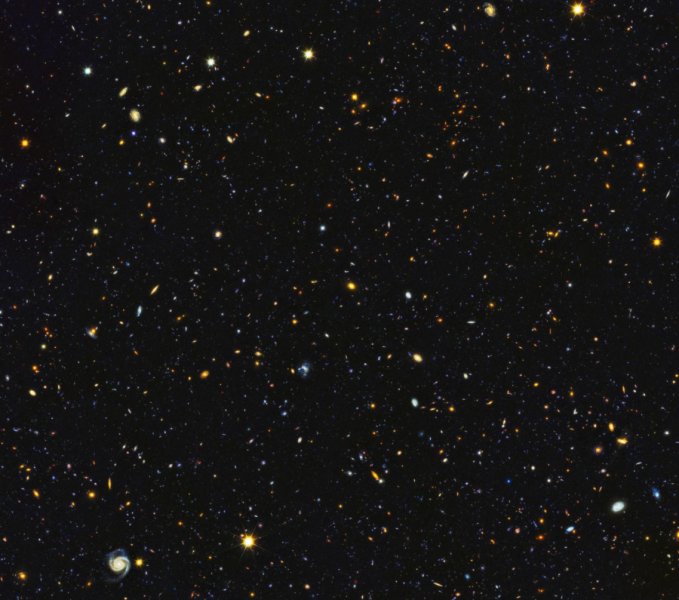
This image is a portion of the GOODS-North field, which is located in the northern constellation Ursa Major.
The Hubble Space Telescope is a project of international cooperation between NASA and ESA (European Space Agency). NASA's Goddard Space Flight Center in Greenbelt,
Maryland, manages the telescope. The Space Telescope Science Institute (STScI) in Baltimore, Maryland, conducts Hubble science operations. STScI is operated for NASA by the Association of Universities for Research in Astronomy in Washington, D.C.
Astronomers have just assembled one of the most comprehensive portraits yet of the universe's evolutionary history, based on a broad spectrum of observations by the Hubble Space Telescope and other space and ground-based telescopes. In particular, Hubble's ultraviolet vision opens a new window on the evolving universe, tracking the birth of stars over the last 11 billion years back to the cosmos' busiest star-forming period, about 3 billion years after the big bang. This photo encompasses a sea of approximately 15,000 galaxies -- 12,000 of which are star-forming -- widely distributed in time and space. This mosaic is 14 times the area of the Hubble Ultra Violet Ultra Deep Field released in 2014.
Credit: NASA, ESA, P. Oesch (University of Geneva), and M. Montes (University of New South Wales)
August 16, 2018
Astronomers using the ultraviolet vision of NASA's Hubble Space Telescope have captured one of the largest panoramic views of the fire and fury of star birth in the distant universe. The field features approximately 15,000 galaxies, about 12,000 of which are forming stars. Hubble's ultraviolet vision opens a new window on the evolving universe, tracking the birth of stars over the last 11 billion years back to the cosmos' busiest star-forming period, which happened about 3 billion years after the big bang.
Ultraviolet light has been the missing piece to the cosmic puzzle. Now, combined with infrared and visible-light data from Hubble and other space and ground-based telescopes, astronomers have assembled one of the most comprehensive portraits yet of the universe's evolutionary history.
The image straddles the gap between the very distant galaxies, which can only be viewed in infrared light, and closer galaxies, which can be seen across a broad spectrum. The light from distant star-forming regions in remote galaxies started out as ultraviolet. However, the expansion of the universe has shifted the light into infrared wavelengths. By comparing images of star formation in the distant and nearby universe, astronomers glean a better understanding of how nearby galaxies grew from small clumps of hot, young stars long ago.
Because Earth's atmosphere filters most ultraviolet light, Hubble can provide some of the most sensitive space-based ultraviolet observations possible.
The program, called the Hubble Deep UV (HDUV) Legacy Survey, extends and builds on the previous Hubble multi-wavelength data in the CANDELS-Deep (Cosmic Assembly Near-infrared Deep Extragalactic Legacy Survey) fields within the central part of the GOODS (The Great Observatories Origins Deep Survey) fields. This mosaic is 14 times the area of the Hubble Ultra Violet Ultra Deep Field released in 2014.

This image is a portion of the GOODS-North field, which is located in the northern constellation Ursa Major.
The Hubble Space Telescope is a project of international cooperation between NASA and ESA (European Space Agency). NASA's Goddard Space Flight Center in Greenbelt,
Maryland, manages the telescope. The Space Telescope Science Institute (STScI) in Baltimore, Maryland, conducts Hubble science operations. STScI is operated for NASA by the Association of Universities for Research in Astronomy in Washington, D.C.
Astronomers have just assembled one of the most comprehensive portraits yet of the universe's evolutionary history, based on a broad spectrum of observations by the Hubble Space Telescope and other space and ground-based telescopes. In particular, Hubble's ultraviolet vision opens a new window on the evolving universe, tracking the birth of stars over the last 11 billion years back to the cosmos' busiest star-forming period, about 3 billion years after the big bang. This photo encompasses a sea of approximately 15,000 galaxies -- 12,000 of which are star-forming -- widely distributed in time and space. This mosaic is 14 times the area of the Hubble Ultra Violet Ultra Deep Field released in 2014.
Credit: NASA, ESA, P. Oesch (University of Geneva), and M. Montes (University of New South Wales)
Funding For Dundundra Falls Reserve
Friday August 17th, 2018
Member for Pittwater Rob Stokes today announced Dundundra Falls Reserve at Terrey Hills has been awarded NSW Government funding to assist with the protection of its spectacular native bushland.
A grant of $77,505 has been provided under the NSW Government’s Restoration and Rehabilitation Program to help preserve and enhance the reserve’s native vegetation and fauna habitat.
Dundundra Falls Reserve covers 38 hectares of Crown Land and is carefully managed by an enthusiastic and passionate group of local volunteers and expert bush regenerators. The Reserve serves as an important natural buffer between the residential areas of Terrey Hills and Ku-ring-gai Chase National Park.
“Dundundra Falls Reserve is an enormously significant area of our community,” Rob Stokes said today.
“The reserve is home to a variety of threatened flora and fauna species and two endangered ecological communities.
“The strategic location of Dundundra Falls Reserve, on the fringe of Ku-ring-gai Chase National Park, means it serves as an important line of defence against domestic stormwater runoff and noxious weeds.
“An enormous amount of work is carried out by local volunteers and bush regenerators to ensure this little-known yet spectacular area of our community is maintained and improved.
“I’m delighted the NSW Government is continuing to support the management and preservation of Dundundra Falls Reserve,” Rob Stokes said.
_________________________
Bushcare Group details at: dundundrafalls.weebly.com
Future Of Our Marine Parks Secured
- establishing advisory committees to guide protection of our unique marine environment for local and regional communities;
- delivering assistance to affected commercial fishers to transition their business to the new operating environment;
- grants to help marine users including recreational fishers as well as industries engage in marine park management; and
- incentives to encourage uptake of vessel monitoring systems.
Federal Government Secures Savage Cutbacks To Australia’s Marine Sanctuaries
North Coast Shark Nets To Go - Now Let’s Pull Them Down Across NSW Coast
Entries Open For 2018 NSW Farmers Of The Year Award
Long Reef Guided Reef Walks
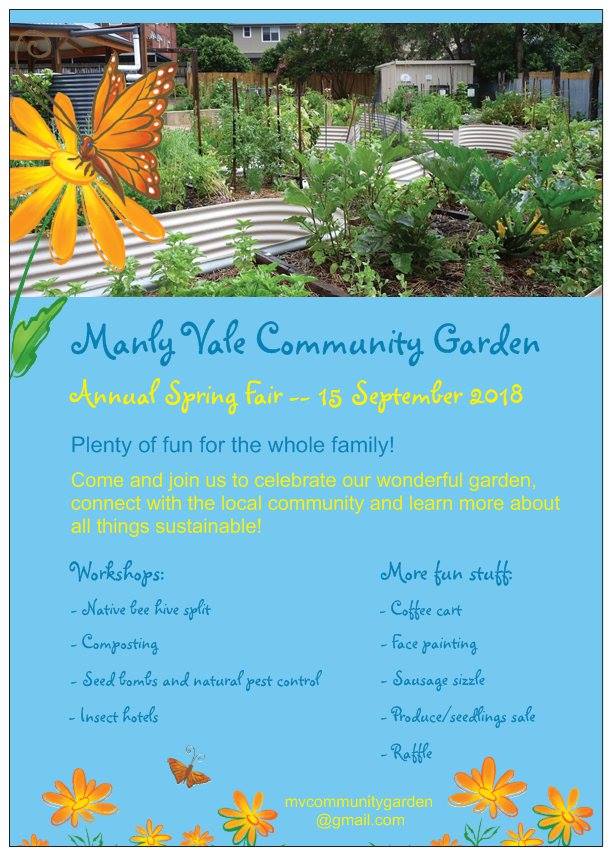
Katandra Season 2018
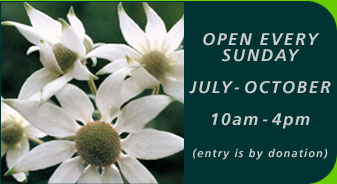
Newport Community Garden: Working Bee Second Sunday Of The Month
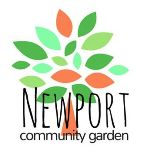 Newport Community Gardens Inc. is a not for profit incorporated association. The garden is in Woolcott Reserve.
Newport Community Gardens Inc. is a not for profit incorporated association. The garden is in Woolcott Reserve.Pittwater Reserves
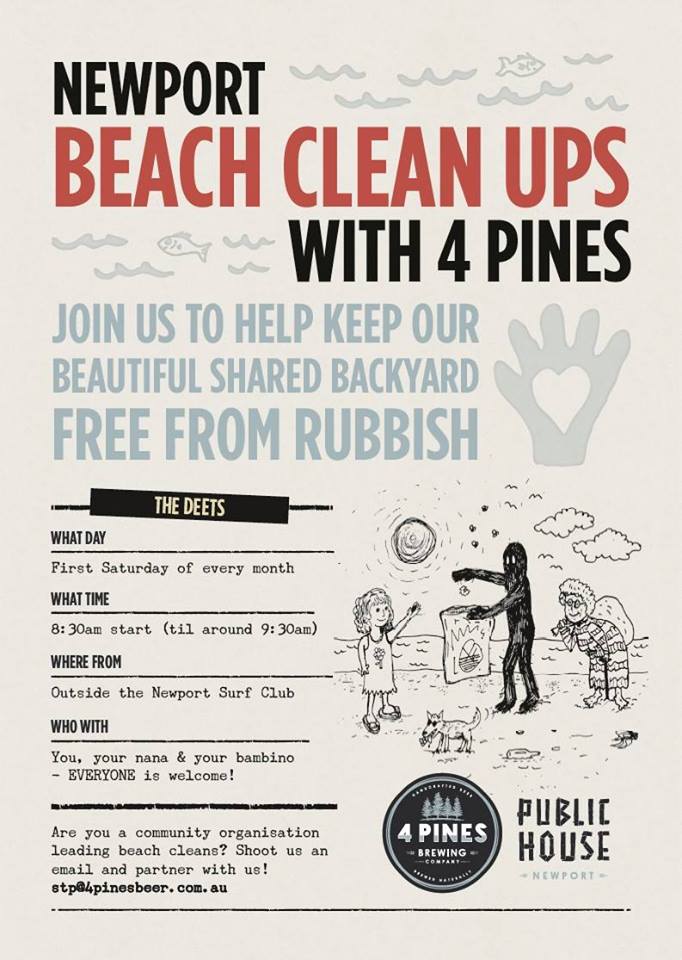
Stony Range Spring Fair
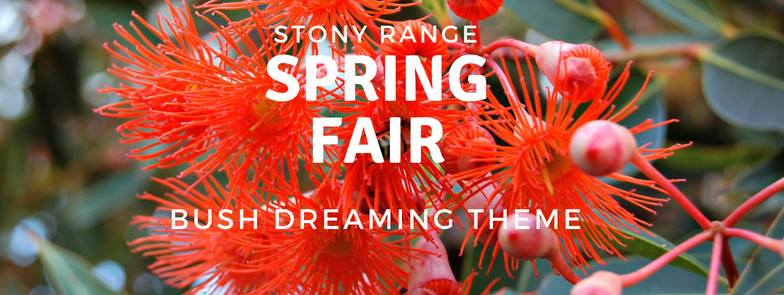
Mona Vale Garden Club's 47th Spring Flower Show
- plants
- white elephant goods
- cakes
- refreshments

Bee Keeping Talk At Warriewood
 Thursday, September 27, 2018
Thursday, September 27, 2018PNHA Newsletter 76
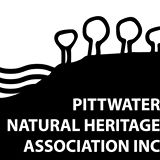
Friends Of Narrabeen Lagoon Catchment August 2018 Forum
 Next forum: Creeks in the Catchment
Next forum: Creeks in the CatchmentGreening Your Home - Eco Retrofitting The Suburbs - Special Event
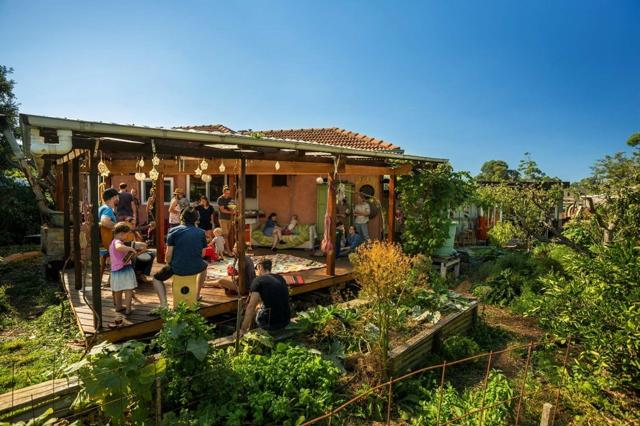
Curl Curl Lagoon: Looking Up - Blue Water And Blue Sky - Looking Down: A Tide Of Rubbish And Plastic Bottles
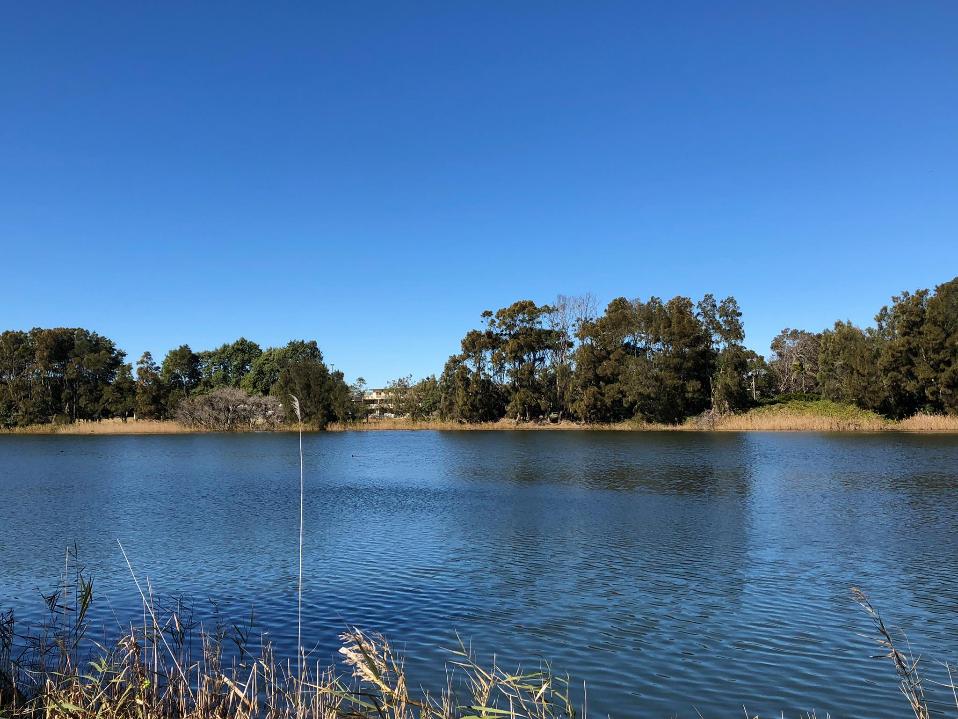
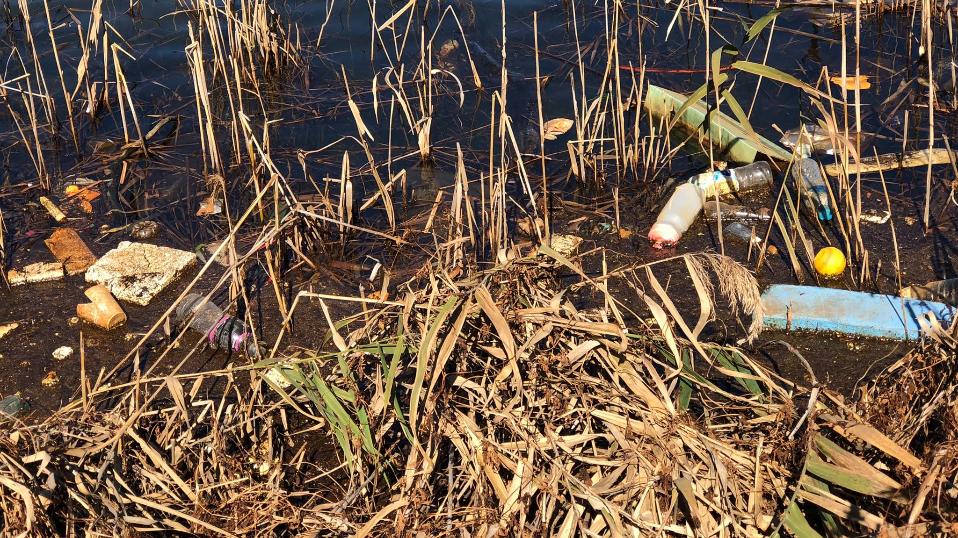
Puerto Sherry To Host 2019 Para World Sailing Championships
August 15, 2018: World Sailing
Puerto Sherry, El Puerto de Santa María, Cadiz, Spain has been selected by World Sailing to host the 2019 Para World Sailing Championships from 1-7 July 2019.
The Para World Sailing Championships showcases the best-of-the-best in Para World Sailing, creates sporting heroes and engages sailing and sports fans as well as sponsors and broadcasters.
World Sailing and Marina Puerto de Santa Maria will work collaboratively to deliver the Championships.
Massimo Dighe, Para World Sailing Manager, commented, "World Sailing is delighted that Puerto Sherry will be hosting the 2019 edition of the Para World Sailing Championships.
"The Marina has an outstanding track record of hosting major international sailing events. The facilities for Para World Sailing athletes are world class and we’re looking forward to working with the organisers to deliver a memorable event for all those involved.
"I am sure all the sailors’ attending will receive a warm welcome."
Valle de la Riva, President of Club Náutico Puerto Sherry & Marina Puerto Santa Maria, said, "The sailors will be overwhelmed by the wind and sea conditions as well as the entertainment on land in Puerto Sherry. Sailors will have high hopes of the venue and we have a unique venue in every way that they will fall in love with."
Rafael Martín-Prat, CEO of Puerto Sherry Para World Sailing Championships 2019 added, "Cadiz Bay is renowned for its wind and world class sailing. Alongside the on-water competition, the sailors will get to visit an ancient historic town steeped in history.
"Andalusia is a place out of this world and I encourage all the sailors to not just hear about it, but come and enjoy it. We will aim to deliver one of the best Championships in Para World Sailing history and we’re waiting for the competitors to come and discover it."
Kiel, Germany hosted the most recent edition of the Para Worlds in 2017 and more than 80 sailors’ from 37 nations competed across the Open 2.4 Norlin OD, Men's Hansa 303 and Women's Hansa 303.
From 16-22 September 2018, the US Sailing Center of Sheboygan in Sheboygan, Wisconsin, USA will host the 2018 edition with racing to take place across the Open 2.4 Norlin OD, Men’s Hansa 303, Women’s Hansa 303 and the RS Venture Connect. New formats will be trialled in Sheboygan to ensure an exciting competition for the competitors and those watching locally and from afar.
First Biomarker Evidence Of DDT-Autism Link
August 16, 2018: Columbia University's Mailman School of Public Health
A study of more than 1 million pregnancies in Finland reports that elevated levels of a metabolite of the banned insecticide DDT in the blood of pregnant women are linked to increased risk for autism in the offspring. An international research team led by investigators at Columbia University's Mailman School of Public Health and the Department of Psychiatry published these results in the American Journal of Psychiatry. The study, conducted in collaboration with investigators at the University of Turku and the National Institute of Health and Welfare in Finland, is the first to connect an insecticide with risk for autism using maternal biomarkers of exposure.
Researchers identified 778 cases of childhood autism among offspring born from 1987 to 2005 to women enrolled in the Finnish Maternity Cohort, representing 98 percent of pregnant women in Finland. They matched these mother-child pairs with control offspring of mothers and offspring without autism. Maternal blood taken during early pregnancy was analyzed for DDE, a metabolite of DDT, and PCBs, another class of environmental pollutants.
The investigators found the odds of autism with intellectual disability in offspring were increased by greater than twofold for the mother's DDE levels in the top quartile. For the overall sample of autism cases, the odds were nearly one-third higher among offspring exposed to elevated maternal DDE levels. The findings persisted after adjusting for several confounding factors such as maternal age and psychiatric history. There was no association between maternal PCBs and autism.
While DDT and PCBs were widely banned in many nations over 30 years ago, including the U.S. and Finland, they persist in the food chain because their breakdown occurs very slowly, as long as several decades, resulting in continuing exposure to populations. These chemicals are transferred across the placenta in concentrations greater than those seen in the mother's blood.
"We think of these chemicals in the past tense, relegated to a long-gone era of dangerous 20th Century toxins," says lead author Alan S. Brown, MD, MPH, professor of Epidemiology at Columbia University's Mailman School of Public Health and of Psychiatry at Columbia University Medical Center. "Unfortunately, they are still present in the environment and are in our blood and tissues. In pregnant women, they are passed along to the developing fetus. Along with genetic and other environmental factors, our findings suggest that prenatal exposure to the DDT toxin may be a trigger for autism."
The researchers offer two reasons for their observation that maternal exposure to DDE was related to autism while maternal PCB exposure was not. First, maternal DDE is associated with low birthweight, a well-replicated risk factor for autism. In contrast, maternal PCB exposure has not been related to low birthweight. Second, they point to androgen receptor binding, a process key to neurodevelopment. A study in rats found DDE inhibits androgen receptor binding, an outcome also seen in a rat model of autism. In contrast, PCBs increase androgen receptor transcription.
Alan S. Brown et al. Association of Maternal Insecticide Levels With Autism in Offspring From a National Birth Cohort.American Journal of Psychiatry, 2018 DOI: 10.1176/appi.ajp.2018.17101129
Moderate Carbohydrate Intake May Be Best For Health, Study Suggests
August 17, 2018: The Lancet
Eating carbohydrates in moderation seems to be optimal for health and longevity, suggests new research published in The Lancet Public Health journal.
The observational study of more than 15,400 people from the Atherosclerosis Risk in Communities Study (ARIC) in the USA found that diets both low (< 40% energy) and high (>70% energy) in carbohydrates were linked with an increase in mortality, while moderate consumers of carbohydrates (50-55% of energy) had the lowest risk of mortality.
The primary findings, confirmed in a meta-analysis of studies on carbohydrate intake including more than 432,000 people from over 20 countries, also suggest that not all low-carbohydrate diets appear equal -- eating more animal-based proteins and fats from foods like beef, lamb, pork, chicken and cheese instead of carbohydrate was associated with a greater risk of mortality. Alternatively, eating more plant-based proteins and fats from foods such as vegetables, legumes, and nuts was linked to lower mortality.
"We need to look really carefully at what are the healthy compounds in diets that provide protection," says Dr Sara Seidelmann, Clinical and Research Fellow in Cardiovascular Medicine from Brigham and Women's Hospital, Boston, USA who led the research.
"Low-carb diets that replace carbohydrates with protein or fat are gaining widespread popularity as a health and weight loss strategy. However, our data suggests that animal-based low carbohydrate diets, which are prevalent in North America and Europe, might be associated with shorter overall life span and should be discouraged. Instead, if one chooses to follow a low carbohydrate diet, then exchanging carbohydrates for more plant-based fats and proteins might actually promote healthy aging in the long term."
Previous randomised trials have shown low carbohydrate diets are beneficial for short-term weight loss and improve cardiometabolic risk. However, the long-term impact of carbohydrate restriction on mortality is controversial with prospective research so far producing conflicting results. What's more, earlier studies have not addressed the source or quality of proteins and fats consumed in low-carb diets.
To address this uncertainty, researchers began by studying 15,428 adults aged 45-64 years from diverse socioeconomic backgrounds from four US communities (Forsyth County, NC; Jackson, MS; Minneapolis, MN; and Washington County, MD) enrolled in the ARIC cohort between 1987 and 1989. All participants reported consuming 600-4200 kcal per day for men and 500-3600 kcal per day for women, and participants with extreme (high or low) caloric intake were excluded from the analysis.
At the start of the study and again 6 years later, participants completed a dietary questionnaire on the types of food and beverages they consumed, what portion size and how often, which the researchers used to estimate the cumulative average of calories they derived from carbohydrates, fats, and protein.
The researchers assessed the association between overall carbohydrate intake (categorised by quantiles) and all cause-mortality after adjusting for age, sex, race, total energy intake, education, exercise, income level, smoking, and diabetes. During a median follow-up of 25 years, 6283 people died.
Results showed a U-shape association between overall carbohydrate intake and life expectancy, with low (less than 40% of calories from carbohydrates) and high (more than 70%) intake of carbohydrates associated with a higher risk of mortality compared with moderate intake (50-55% of calories).
The researchers estimated that from age 50, the average life expectancy was an additional 33 years for those with moderate carbohydrate intake -- 4 years longer than those with very low carbohydrate consumption (29 years), and 1 year longer compared to those with high carbohydrate consumption (32 years). However, the authors highlight that since diets were only measured at the start of the trial and 6 years later, dietary patterns could change over 25 years, which might make the reported effect of carbohydrate consumption on lifespan less certain.
In the next step of the study, the authors performed a meta-analysis of data from eight prospective cohorts (including ARIC) involving data from 432,179 people in North American, European, and Asian countries. This revealed similar trends, with participants whose overall diets were high and low in carbohydrates having a shorter life expectancy than those with moderate consumption.
As Seidelmann explains, "A midrange of carbohydrate intake might be considered moderate in North America and Europe where average consumption is about 50% but low in other regions, such as Asia, where the average diet consists of over 60% carbohydrates."
In further analyses examining whether the source of proteins and fats favoured in low-carbohydrate diets -- plant-based or animal-based -- was associated with length of life, researchers found that replacing carbohydrates with protein and fat from animal sources was associated with a higher risk of mortality than moderate carbohydrate intake. In contrast, replacing carbohydrates with plant-based foods was linked to a lower risk of mortality (table 3).
"These findings bring together several strands that have been controversial. Too much and too little carbohydrate can be harmful but what counts most is the type of fat, protein, and carbohydrate," says Walter Willett, Professor of Epidemiology and Nutrition at Harvard T. H. Chan School of Public Health and co-author of the study.
The findings show observational associations rather than cause and effect. Considering evidence from other studies, the authors speculate that Western-type diets that heavily restrict carbohydrates often result in lower intake of vegetables, fruit, and grains and lead to greater consumption of animal proteins and fats -- some of which have been implicated in stimulating inflammatory pathways, biological aging, and oxidative stress -- and could be a contributing factor to the increased risk of mortality. Whilst high carbohydrate diets (common in Asian and less economically advantaged nations) tend to be high in refined carbohydrates such as white rice, may also contribute to a chronically high glycaemic load and worse metabolic outcomes.
"This work provides the most comprehensive study of carbohydrate intake that has been done to date, and helps us better understand the relationship between the specific components of diet and long term health," says Dr Scott Solomon, The Edward D Frohlich Distinguished Chair at Brigham and Women's Hospital and Professor of Medicine at Harvard Medical School, and senior author on the paper. "While a randomized trial has not been performed to compare the longer term effects of different types of low carbohydrate diets, these data suggest that shifting towards a more plant-based consumption is likely to help attenuate major morbid disease."
The authors note some limitations including that dietary patterns were based on self-reported data, which might not accurately represent participants' food consumption; and that their conclusions about animal-based sources of fat and protein might have less generalisability to Asian populations which tend to have diets high in carbohydrates, but often consume fish rather than meat. Finally, given the relatively small number of individuals following plant-based low-carb diets, further research is needed.
Writing in a linked Comment, Dr Andrew Mente and Dr Salim Yusuf from McMaster University, Hamilton, Canada say, "Such differences in risk associated with extreme differences in intake of a nutrient are plausible, but observational studies cannot completely exclude residual confounders when the apparent differences are so modest. Based on first principles, a U-shaped association is logical between most essential nutrients versus health outcomes. Essential nutrients should be consumed above a minimal level to avoid deficiency and below a maximal level to avoid toxicity. This approach maintains physiological processes and health (ie, a so-called sweet spot). Although carbohydrates are technically not an essential nutrient (unlike protein and fats), a certain amount is probably required to meet short-term energy demands during physical activity and to maintain fat and protein intakes within their respective sweet spots. On the basis of these principles, moderate intake of carbohydrate (eg, roughly 50% of energy) is likely to be more appropriate for the general population than are very low or very high intakes."
Sara B Seidelmann, Brian Claggett, Susan Cheng, Mir Henglin, Amil Shah, Lyn M Steffen, Aaron R Folsom, Eric B Rimm, Walter C Willett, Scott D Solomon. Dietary carbohydrate intake and mortality: a prospective cohort study and meta-analysis. The Lancet Public Health, 2018; DOI: 10.1016/S2468-2667(18)30135-X
Digital Learning Brings The World To The Classroom
August 13, 2018: NSW Education Department
Eight public schools have been recognised for their innovative use of technology to enhance teaching and learning – inside and outside of the classroom.
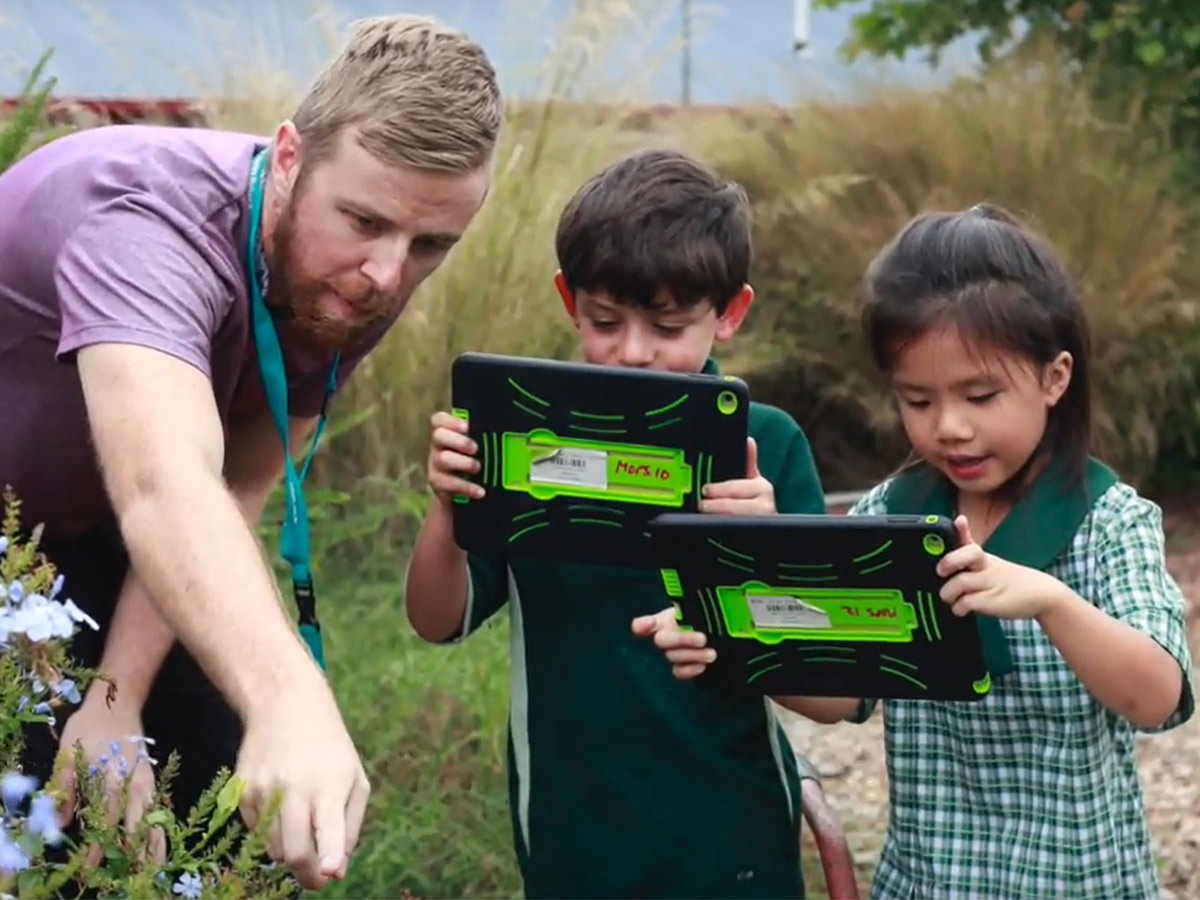
Mount Ousley Public School students use technology from Kindergarten.
And size is no barrier when it comes to delivering digital learning at the highest level. That’s the message from the 220-student Mount Ousley Public School, named today as the state’s Digital Lighthouse School at the inaugural Technology 4 Learning (T4L) Awards for its comprehensive, cross-curriculum embrace of digital learning.
The school has adopted a BYOD policy from Kindergarten to Year 6 and uses a range of technologies including robotics, blue screen filming, drones and coding.
It has partnered with the University of Wollongong on a virtual reality research program and brings the world to the students through global empathy projects and by connecting with astronauts on the International Space Station.
Mount Ousley Public School was one of eight schools recognised by the Department of Education for innovative use of technology to enhance teaching and learning at the school.
NSW Department of Education Technology for Learning Director Mark Greentree said he was proud to acknowledge and celebrate the innovative work the winning schools, students and teachers were doing with technology.
“I’m excited at the prospect of empowering other schools to embark upon a technology for learning journey of their own,” he said.
The awards were announced today at the Department of Education’s annual CIO’s Technology in Schools Conference, with the winners running workshops for participants to hear their story and be inspired by their success.
The NSW Department of Education is committed to empowering schools to teach today’s students the skills to solve the problems of tomorrow by providing state-of-the-art information and communications technologies, including robotics, makerspaces and digital learning and administration tools.
The $23 million STEMShare Community project, announced last week by the Premier, Gladys Berejiklian, will provide all NSW public schools with access to cutting-edge technology to ignite students’ interest in Science, Technology, Engineering and Mathematics subjects (STEM) subjects.
The STEMShare Community program includes classroom kits with robotics, 3D printing, coding, film-making, and virtual and augmented reality – all vital technologies for the study of STEM Science subjects.
In its first year, the T4L Awards recognise schools that are inspiring and leading change locally, as well as participating in online and physical communities that develop the skills of the teaching profession and inspire organisation-wide change.
The winning schools were:
- Mount Ousley Public School – Digital Lighthouse School, Innovative Use of ICT in Primary School
- Callaghan College Wallsend Campus – Innovation in Digital Administration & Management, Leader in Developing Digital Collaborative Communities
- Callaghan College Jesmond Campus – Leader in Integration of Virtual Learning Environments
- Gymea Bay Public School – Leader in Digital Learning Tools
- Valentine Public School – Leader in Digital Makerspace Technologies
- Glenwood High School – Innovative Use of ICT in Secondary School
- Aurora College – Leader in Productivity & Collaboration
- Melrose Park Public School – Leader in Robotics.
The Forest High School
T4L Award - LEADER IN ROBOTICS - Highly Commended 2018
Australian Open Surfing Team Announced For ISA World Surfing Games
Thursday August 16, 2018
Surfing Australia is excited to announce the Australian Open Surfing Team for the 2018 International Surfing Association (ISA) World Surfing Games, to be held on September 15th- 22nd in Tahara, Japan.
Athletes have been selected based on their rankings on the 2018 World Surf League World Championship Tour, Qualifying Series or Australia/Oceania Junior Tour.
Surfing Australia’s National High Performance Director Kim Crane said, “We’re excited to be taking the Australian Open Surfing Team to this event; it provides us with a chance to compete in the beach conditions at Tahara, to understand the format, embrace a performance opportunity, and build momentum on our ‘Team Australia’ culture.
"The Olympic qualifying system states that the 2019 & 2020 ISA World Surfing Games is imperative for athlete selection in the Tokyo 2020 Games, so this presents a significant opportunity for these athletes to not only perform on the world stage for their country but also to capture some learnings that our National Squad athletes will be able to apply in the 2019 & 2020 events. We have a great mix of experience and youth, so as individual competitors it’s a terrific opportunity for our athletes to show up as a team, for each other.”
Sally Fitzgibbons, current World Surf League and Australian National Squad athlete said: “It's a huge honour to be selected to represent our country in Japan for the ISA World Surfing Games and to Captain the team. Its such a unique opportunity to be in a team environment like this and continue to build the culture as Team Australia heading toward the 2020 Olympics. I've always wanted to check out Japan and the epic surf culture. I can't wait to head over to ride some waves, learn as a competitor and share this experience with my super talented teammates and coaching staff. C'mon Aussies.”
The team, who will be supported by Surfing Australia’s Elite Program Manager Bede Durbidge and Coach Tim Macdonald is:
Women:
Sally Fitzgibbons (Team Captain)
Holly Wawn
Philippa Anderson
Men:
Kai Tandler
Callum Robson
Dextar Muskens
Surfing Australia’s Elite Program Manager Bede Durbidge said: “This is a significant achievement within the already successful careers of these athletes, and it cements their strong positioning as the top athletes within our sport. Anytime you get an opportunity to represent your country is a really proud moment, and those who have been selected all work really hard to be the best they can be. I’m stoked that Sal has accepted the role of Team Captain for this event; she has green and gold blood running through her veins! The pride and passion she holds for competing for our country is certainly going to make her really hard to beat and there is no doubt she has her eye firmly on Olympic readiness at this event.”
The Australian Open Surfing Team is proudly supported for the Australian Institute of Sport (AIS) and Hydralyte Sports.

Holly Wawn - photo by Ethan Smith/Surfing NSW
Curious Kids: Why Do We Have Tonsils?????
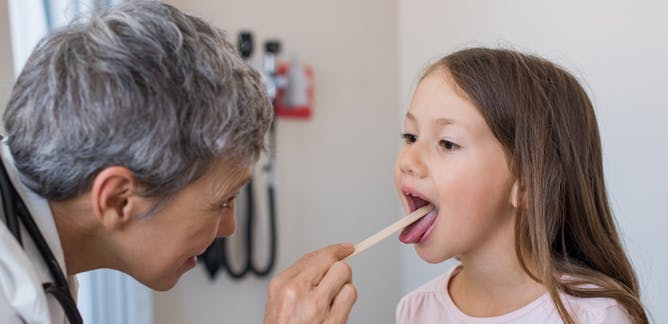
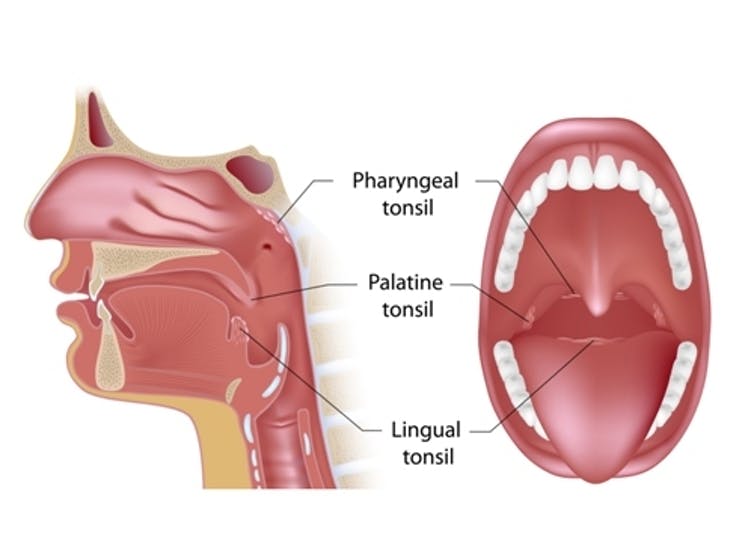
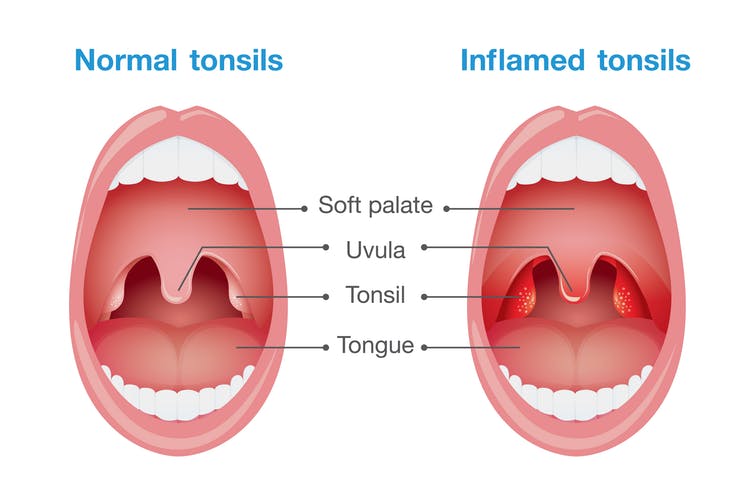
New HSC Course To Nurture Our Next Generation Of Scientists
August 17, 2018
The State’s top science students will be challenged to achieve at even higher levels with a new course in the 2019 Higher School Certificate intended to foster future scientists and researchers.
Premier Gladys Berejiklian and Education Minister Rob Stokes formally launched the new course, HSC Science Extension, at Sydney Girls High School today.
“We want to be able to provide our next generation of scientists with the knowledge and skills they need to lead modern scientific research,” Ms Berejiklian said.
“This new course will inspire and challenge some of our best students and prepare them for the many future jobs that we know will need high-level STEM expertise.”
The focus of the new course is a scientific research project that each student may undertake in association with Australian and international researchers, universities and research institutions. Projects could also involve partnering with industry to pursue a research idea that has commercial application.
HSC Science Extension will enable HSC students for the first time to study seven units of science from 2019, allowing keen science students to take on Physics, Biology, Chemistry and the new Science Extension course.
“Never before has our education system offered a science course like this that will help make a link between school science and tertiary studies,” Mr Stokes said.
“It’s a cross-disciplinary course that will engage our top young science students to really challenge themselves.”
“In keeping with the technology focus of the course, the students will be examined with a computer-based exam at the end of their studies,” he said.
The new HSC Science Extension course means students seeking a career in the STEM fields can be challenged in the same way as advanced English, Mathematics and History students who have the option of undertaking extension courses.
The first students to undertake the HSC Science Extension course will begin the program on Monday 15 October.
Find out more at: educationstandards.nsw.edu.au/nesa/11-12/stage-6-learning-areas/stage-6-science/science-extension-syllabus
Aretha Franklin And Her Community Opened Their Doors And Their Hearts To Me
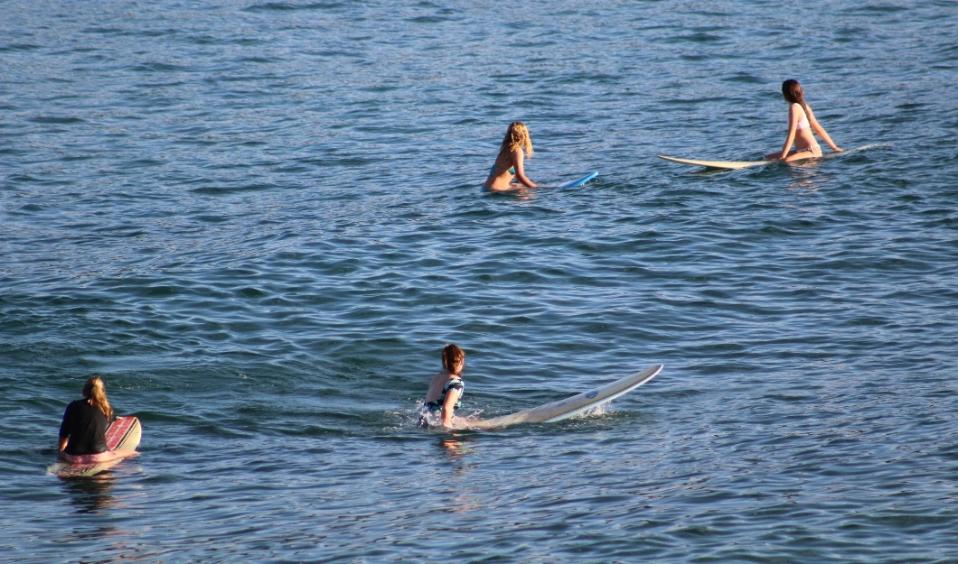
Disclaimer: These articles are not intended to provide medical advice, diagnosis or treatment. Views expressed here do not necessarily reflect those of Pittwater Online News or its staff.